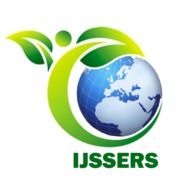Effect of Metacognitive Instructional Strategy Using PEEDA on Biology Students Achievement in Delta State
The purpose of this research was to determine whether and how a metacognitive educational technique based on PEDDA (Prior knowledge, Exploration, Discussion, Dissatisfaction, and Application) will improve the performance of secondary school biology students in Delta State. The investigation was guided by three hypotheses and three research questions. The research used a quasi-experimental design with a non-equivalent pre-post test and control group setup. Students from the public secondary schools in the three (3) senatorial districts of Delta State were included in the research. A total of 30,813 SS II biology students and 436 overall participated. This research employed a sample of 300 SS II biology students and six biology professors from six different high schools in Delta State. Data was gathered using the researcher’s primary instrument, the Meta-Cognitive Biology Achievement Test (MBAT). Students in the experimental group were taught the biology concepts of “pollution,” “exploration of the different types of pollution,” “discussion on the causes of pollution as well as the effects of pollution,” “dissatisfaction with the experience,” and “application of the control measures for pollution” using a metacognitive instructional strategy, while students in the control group were taught using the lecture method. Statistical methods such as analysis of variance (ANOVA), analysis of covariance (ANCOVA), and mean and standard deviation (SEM) were used to compile and interpret the results (ANCOVA). It was shown that the metacognitive approach to teaching was more effective than the traditional lecture format. Furthermore, the research indicated that while using the metacognitive teaching technique, there was no statistically significant difference in the mean accomplishment scores of male and female students (PEDDA). The study’s results led to many recommendations, including the adoption of metacognitive teaching tactics by secondary school biology instructors to increase student engagement.

